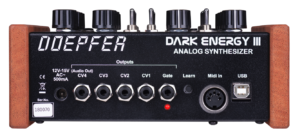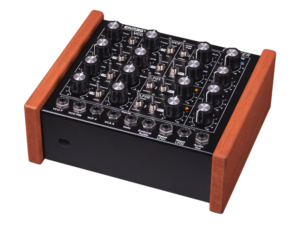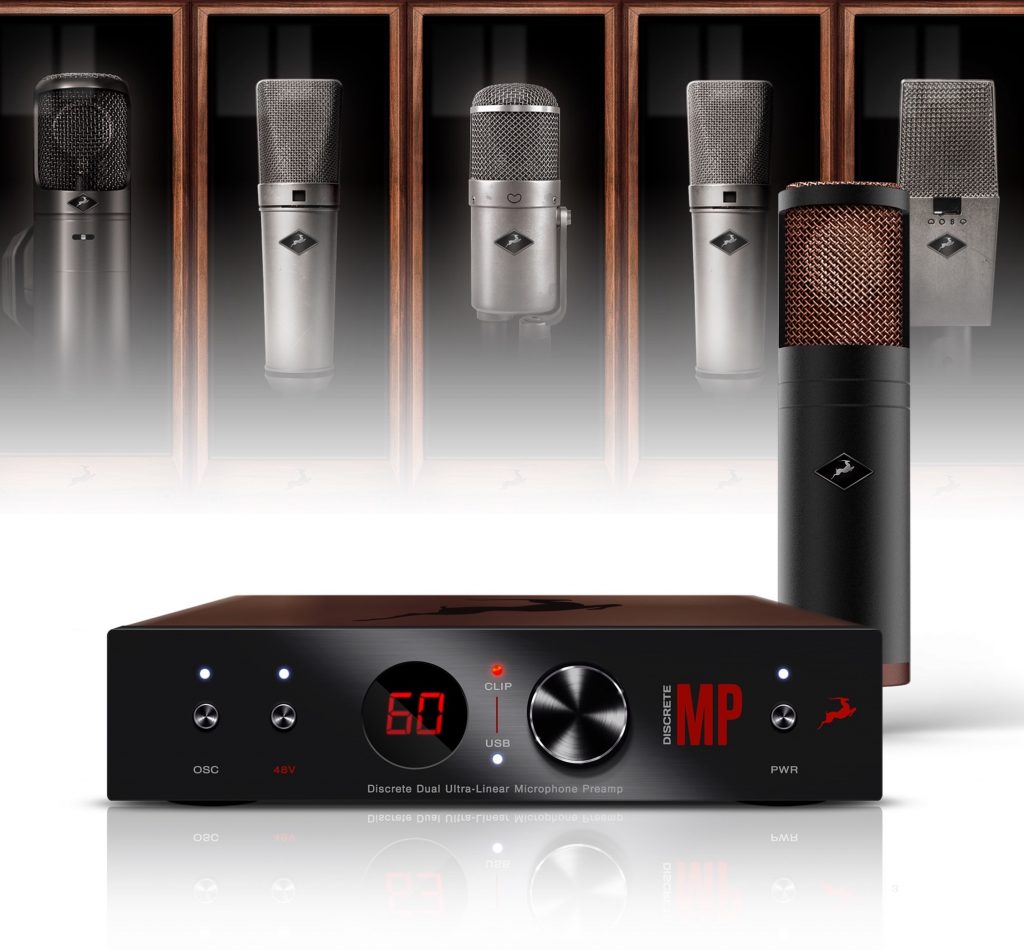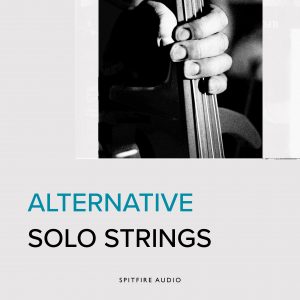












To guarantee the ultimate ease of use, all sample-based sounds can be accessed, browsed and combined within the single SampleTank interface which allows for the creation of quick and easy multitimbral productions from Rock, Pop, Hip-Hop, EDM, Trap, Jazz, House and more, there is no limit to the style. The industry-standard SampleTank MAX, IK’s complete sound and groove workstation, itself comprises 24 libraries, 4,600 instruments, 7,400 drums and loops and 3,500 MIDI patterns. These sounds are far from ordinary: they have been carefully assembled and recorded by IK’s experienced recording engineers with high-quality instruments played by professional musicians in some of the world’s finest studios. Most importantly, SampleTank 3’s powerful editing and effects features make it possible to control every aspect of these sounds, which allows for an unparalleled creative sonic experience and satisfies the needs of even the most demanding music producers.
Physically modeled
Furthermore, Total Studio 2 MAX adds the break-through physically modeled iconic instruments from MODO BASS into the bundle, incorporating the widest assortment of electric bass sounds for unmatched expressiveness. MODO BASS utilizes a completely new technology where sound is generated by recreating the physical properties of a real bass, no samples are used, and it recreates virtually every electric bass sound imaginable delivering an unprecedented realistic performance for any bass track.
Legendary synthesizers
In addition, Total Studio 2 MAX comprises over 4,000 electronic instrument sounds including hybrid sample and modeling synths. From the undeniably authentic sound of legendary synthesizers and string machines to the driving power of world-class effects, IK’s Syntronik offers the definitive and best-sounding collection of vintage synthesizers in a virtual instrument. It includes 17 amazing instruments with over 2,000 preset sounds covering a wide selection from 38 of the most iconic to ultra-rare and painstakingly multi-sampled vintage synthesizers. Syntronik’s synthesis engine goes well beyond traditional sampling thanks to a brand new analog modeled filter section created with the utmost expertise from IK. All of this coupled with exclusive DRIFT™ technology to accurately reproduce the behavior of oscillators from real hardware synths makes it the ultimate source of inspiration with the widest palette of synthesizer sounds ranging from exact reproductions of the originals to sounds never heard before that will stand out from the crowd in productions covering any genre and style.
First-class mix and mastering effects
39 individual, high-end mixing and mastering processors from the industry-leading T-RackS 5 MAX workstation and the acclaimed Lurssen Mastering Console are available as single plug-ins or within a single mix and mastering chain, supporting up to 192kHz sample rate. T-Racks 5 MAX is the most powerful mix and master modular system on the market and includes all the necessary tools from EQs & channel strips, dynamics, reverb & effects, harmonics processors to special processors/metering. Lurssen Mastering Console, the official emulation of the multi-GRAMMY® award-winning Lurssen Mastering, Inc. mastering console even further enhances the mastering power packed into Total Studio 2 MAX. Also included is a unique album assembly feature with sequencing and metadata embedding. It’s fast and intuitive and enables the assembly of full-length productions directly within the T-RackS interface.
Sought-after guitar and bass amps & FX
Total Studio 2 MAX offers the largest and most authentic collection of guitar and bass gear available with over 350 coveted circuit-modeled amps, cabinets, mics, stomp effects and rack effects. They include official models of iconic world-class brands such as Fender®, MESA/Boogie®, Ampeg®, Orange®, Fulltone®, Soldano®, ENGL® and more, and span the range from the essential bread and butter models to the most sought-after rarities which most could otherwise just aspire to own.
State-of-the-art technologies coupled with musicality
Everything in Total Studio 2 MAX utilizes the most sophisticated industry standard and IK’s proprietary technologies to always ensure the highest sound quality and musicality, true to IK Multimedia’s mission to putting musicians’ needs first. All products can be easily used both as standalone applications and plug-ins for AU, AAX and VST.
Total Studio 2 DELUXE
The entry-level version, Total Studio 2 DELUXE, with over 9,700 sounds, 12 powerful virtual instruments, 22 mixing and mastering processors and over 140 guitar amps and FX, is aimed at musicians, composers and producers who need a comprehensive collection of creative and specialized tools for their studio, striking the right balance between features, flexibility, variety and power, all at an incredibly affordable price. Total Studio 2 DELUXE comprises 35 products including AmpliTube 4 Deluxe, T-RackS 5 Deluxe, SampleTank 3, Miroslav Philharmonik 2 and more.
Pricing and availability
Total Studio 2 MAX is available in the following versions:
Total Studio 2 DELUXE is available in the following versions:
Special introductory price
All of the Total Studio 2 Upgrade, Maxgrade and Crossgrade titles are offered at a special introductory price of 20% off from March 15 until April 30, 2018.
Total Studio 2 MAX and Total Studio 2 DELUXE are immediately available for download from the IK Multimedia online store and from select retailers worldwide. The boxed versions with a USB flash drive are open for pre-orders at the same corresponding prices** and will commence shipping in April.
* All prices excluding taxes
** Shipping charges apply
 |
||||||||
|


SANTA MONICA, CA, USA: having turned heads and opened ears during a must-see showcase at The 2018 NAMM Show in Anaheim, CA earlier this year, high-end professional audio equipment manufacturer Antelope Audio is proud to announce availability of the EDGE Strip bundle — comprising the trailblazing EDGE modelling microphone and specifically-designed DISCRETE MP Discrete Dual Ultra-Linear Microphone Preamp, perfectly paired to tender the same audio quality as a locker-full of vintage mics and rack-full of outboard gear as an all-in-one solution for high-quality studio recordings with vintage analogue sound — as of February 28…

Antelope Audio’s talented team of engineering experts, led by capable company CEO Igor Levin, designed DISCRETE MP to perfectly match the frequency response of the already-available, trailblazing EDGE, a large-diaphragm modelling microphone featuring dual edge- terminated capsules for a smooth/natural sound, reproducing the expressiveness and character of costly classic microphones — albeit without excessive expense. Elsewhere, the EDGE Strip-bundled DISCRETE MP dual-input microphone preamplifier places the same transistor schematic that beats at the state-of-the-art heart of the aptly-named DISCRETE 8 ThunderboltTM & USB Interface with 8 Discrete Mic Preamps and DISCRETE 4 ThunderboltTM & USB Interface with 4 Discrete Mic Preamps series siblings — released to critical acclaim late last year — at its user’s fingertips.
Furthermore, the EDGE Strip bundle comes complete with the free native-format Fusion AFX Pack plug-ins, including several microphone and preamp emulations alongside the BA 1073 EQ (inspired by the Seventies-vintage channel module with a specific analogue punch putting in an appearance on many notable recordings) and STAY-LEVIN compressor (personally designed by Igor Levin at Antelope Audio to capture the spirit of its historic hardware namesake that shaped the special sound of a slew of Sixties Stateside classics).
Clearly, then, the days of spending tens of thousands of dollars on a vintage mic collection are over, thanks to those must-have microphone emulations: BERLIN 47 FT allows authentic access to the sound of one of the most popular microphones in the history of audio recording; BERLIN 67 carries with it the true sound of an iconic tube condenser microphone with multiple — cardioid, omni, and figure eight — polar patterns, popularised as a result of its signature sound and adaptability; BERLIN 87 is the go-to microphone when it comes to recording brass sections, guitars, overheads, piano, percussion, strings, and vocals; and TOKYO 800T, a vintage tube mic with a super-low noise floor and extreme sensitivity that is a top choice for many masters of vocal recording. Reality bites still further with ANTELOPE V76, GIRAFFE G9, and BAE 1073 MP preamp emulations par excellence.
Evidence has it that Antelope Audio has always collectively prided itself in coming up with technologies that unite the digital and analogue audio worlds. While both DISCRETE MP and EDGE are all-analogue devices, making them fully compatible with any audio interface and A/D converter central to any studio setup anywhere, DISCRETE MP allows users to explore the full potential of EDGE in both Antelope Audio– centred setups or other audio systems. Saying that, thanks to its 1kHz hardware calibration OSC (oscillator), DISCRETE MP easily adapts to any studio setup.
Still deeper, DISCRETE MP masterfully makes available Antelope Audio’s signature sonic footprint of pristine audio quality. The unique discrete design of its preamp allows Antelope Audio to modify each individual aspect of the preamp, putting total control over colouration, clarity, and character in the hands of discerning users.
Ultimately, DISCRETE MP powerfully punches well above its (950g) weight while packing a lot into its diminutive (190mm W x 46.5mm H x 157mm D) dimensions, as evidenced by its impressive technical specifications: two INPUTS on MIC-XLR and LINE-USE 1/4” JACK, offering 20dBu max balanced @ 2kΩ (XLR only) and 29dBu max balanced @ 13K to ground (TRS only); two TRS OUTPUTS (22dBu max); USB CONTROL I/O (USB 2.0 Full-Speed Type B for remote control only); and a mic preamp pushing out an accomplished gain range of 0dB to 61dB (in 1dB steps) alongside 48V phantom power.
Put it this way: when taken together as the EDGE Strip breakthrough bundle, Antelope Audio’s all-new, all-analogue DISCRETE MP Discrete Dual Ultra-Linear Microphone Preamp and already-available EDGE modelling microphone make for a killer combination!
EDGE Strip — a breakthrough bundle of Antelope Audio’s all-new, all-analogue DISCRETE MP Discrete Dual Ultra-Linear Microphone Preamp and already-available, trailblazing EDGE modelling microphone — is now available to purchase through Antelope Audio’s growing global network of dealers with an MSRP of €1,295.00 EUR. (Note that the free native-format Fusion AFX Pack plug-ins are all iLok protected; users can create a free account for the iLok Licensing System and purchase the third-generation iLok Smart Key from here: https://www.ilok.com.)
For more in-depth information, please visit the dedicated EDGE Strip webpage here: https://en.antelopeaudio.com/products/edge-strip/
Watch Antelope Audio’s cutting-edge EDGE modelling microphone demonstration video here: https://youtu.be/ZE-aiemDI58
 LONDON, UK: Spitfire Audio is proud to announce availability of ALTERNATIVE SOLO STRINGS — an aptly-titled, alternative take on a sampled solo strings library for Native Instruments’ industry-standard KONTAKT platform, putting performances of four of the most interesting and progressive string soloists in London into an easy-to- use tool to access Violin (Warren Zielinski), Viola (Joel Hunter), Cello (Chris Worsey), and Double Bass (Mary Scully) for detailed compositional work while offering anyone an instant, out-of-the-box virtual collaborative experience steeped in personality, quality, and distinction — as of February 15…
LONDON, UK: Spitfire Audio is proud to announce availability of ALTERNATIVE SOLO STRINGS — an aptly-titled, alternative take on a sampled solo strings library for Native Instruments’ industry-standard KONTAKT platform, putting performances of four of the most interesting and progressive string soloists in London into an easy-to- use tool to access Violin (Warren Zielinski), Viola (Joel Hunter), Cello (Chris Worsey), and Double Bass (Mary Scully) for detailed compositional work while offering anyone an instant, out-of-the-box virtual collaborative experience steeped in personality, quality, and distinction — as of February 15…
The musicians that Spitfire Audio collectively chose to work with when creatively crafting ALTERNATIVE SOLO STRINGS really represent some of the most exciting and in-demand players on the London orchestral session circuit. Collaborating with many of the biggest recording artists in the world to Oscar award-winning movie score performances, there can’t be many major British recordings in existence that haven’t featured these major players in some shape or form!
Frankly speaking, top violinist and musician Warren Zielinski, award-winning viola player Joel Hunter, professional cellist Chris Worsey, and leading UK double-bass player Mary Scully take some surpassing, having amassed an amazing collection of ‘onscreen’ collective credits between them, including: Captain America (Henry Jackman), Fantastic Beasts And Where To Find Them (James Newton Howard), Victoria & Abdul (Thomas Newman), Jason Bourne (David Buckley/John Powell), Interstellar (Hans Zimmer), Sherlock Holmes: A Game Of Shadows (Hans Zimmer), Inception (Hans Zimmer), Tinker Tailor Soldier Spy (Alberto Iglesias), The Twilight Saga (Carter Burwell), Batman Begins (Hans Zimmer/ James Newton Howard), Gladiator (Hans Zimmer/Lisa Gerrard), Lord Of The Rings: The Fellowship Of The Rings (Howard Shore). Meanwhile, musically Nick Cave, Daft Punk, Mark Ronson, UNKLE, Badly Drawn Boy, U2, Goldfrapp, Joni Mitchell, Max Richter, The Divine Comedy, and Christine and the Queens have all benefitted from the aforesaid players’ perfect performance touch(es).
That all being said, the resulting ALTERNATIVE SOLO STRINGS collaboration creates and adds Double Bass and Viola to Spitfire Audio’s previously-released PP015 ARTISAN CELLO and PP016 ARTISAN VIOLIN libraries, all rewrapped with a new interface and KONTAKT PLAYER compatible — and also Spitfire Audio’s first double-bass library to boot!
Better still, all of these instruments carry with them the signature sound of Spitfire Audio — all artfully designed to provide not only that initial spark of inspiration but also broaden understanding of this particular group of instruments. Indeed, Spitfire Audio always prides itself on making precision tools for composers that deliver effectively on the current demands of the industry alongside a deeply-held belief that creating a series of raw, edgy tools that behave with a certain amount of realistic unpredictability leads to the most exciting results.
 Recorded at the Spitfire Audio HQ’s ultra-high-spec in-house recording studio and tracked there through the finest equipment, as a result, ALTERNATIVE SOLO STRINGS provides perfect accompaniment to Spitfire Audio’s popular LONDON CONTEMPORARY ORCHESTRA STRINGS, which was recorded in the same location. Let it be said, then, that whilst the spirited and sometimes unpredictable recordings may well pleasantly lead its user into unexpected territory, the sonics of Spitfire Audio’s dry stage provide ultimate control — whether that be an upfront Warren Ellis-style approach, a hyper-produced Hans Zimmer-style overdub on top of a large orchestral bed, or, indeed, a virtuoso performance within the section of a chamber work.
Recorded at the Spitfire Audio HQ’s ultra-high-spec in-house recording studio and tracked there through the finest equipment, as a result, ALTERNATIVE SOLO STRINGS provides perfect accompaniment to Spitfire Audio’s popular LONDON CONTEMPORARY ORCHESTRA STRINGS, which was recorded in the same location. Let it be said, then, that whilst the spirited and sometimes unpredictable recordings may well pleasantly lead its user into unexpected territory, the sonics of Spitfire Audio’s dry stage provide ultimate control — whether that be an upfront Warren Ellis-style approach, a hyper-produced Hans Zimmer-style overdub on top of a large orchestral bed, or, indeed, a virtuoso performance within the section of a chamber work.
With access to each instrument performing spirited longs and shorts as well as a series of ‘artisan’ articulations, who better to provide a fitting closing comment on ALTERNATIVE SOLO STRINGS’ ability to offer anyone an instant, out-of-the-box virtual collaborative experience steeped in personality, quality, and distinction, then, than Spitfire Audio co-founder and active composer Paul Thomson? “You’ve got quite a large variety of sound in there to play with,” he begins, before giving credit where credit’s due: “Obviously one of the most important elements of this is the players… Warren Zielinski on violin, Joel Hunter on viola, Chris Worsey on cello, and Mary Scully on bass — four incredible performers with beautiful instruments. They’ve played on so many film scores and records that you would lose count. You’ve heard their playing, and they really are an essential element in making this a successful and inspirational tool. So it’s a huge privilege for us to have worked with them. This is not a polite string library; it’s very definitely alternative, gritty, inspiring, and different.”
ALTERNATIVE SOLO STRINGS can be purchased and digitally downloaded (as 53,146 samples needing 29.64 GB disk space) for a time-limited introductory promo price of £169.00 GBP (inc. VAT)/$199.00 USD/€199.00 EUR (inc. VAT) until March 1, 2018 — rising thereafter to an MSRP of £249.00 GBP (inc. VAT)/$299.00 USD/€299 EUR (inc. VAT) — from here: https://www.spitfireaudio.com/shop/a-z/alternative-solo-strings/
ALTERNATIVE SOLO STRINGS needs Native Instruments’ free KONTAKT PLAYER (5.6.8) — included in the purchase — to run as a fully NKSTM (NATIVE KONTROL STANDARD) supporting plug-in instrument for Mac (OS X 10.10, 10.11, or macOS 10.12 — latest update) or Windows (7, 8, or 10 — latest Service Pack, 32/64-bit), while Spitfire Audio’s free Download Manager application allows anyone to buy now and download anytime.
For more in-depth information, including several superb-sounding audio demos, please visit the dedicated ALTERNATIVE SOLO STRINGS webpage here: https://www.spitfireaudio.com/shop/a-z/alternative-solo-strings/
Watch Spitfire Audio Director Paul Thomson’s ‘traditional’ video walkthrough of ALTERNATIVE SOLO STRINGS here: https://youtu.be/j1WHHaS4X2k
Watch Spitfire Audio ‘composer in residence’ Oliver Patrice Weder’s ALTERNATIVE SOLO STRINGS ‘In Action’ video here: https://youtu.be/9zg0m1mw7d4
Watch Spitfire Audio’s informative introductory video for ALTERNATIVE SOLO STRINGS here: https://youtu.be/JiaNL8lKkDU